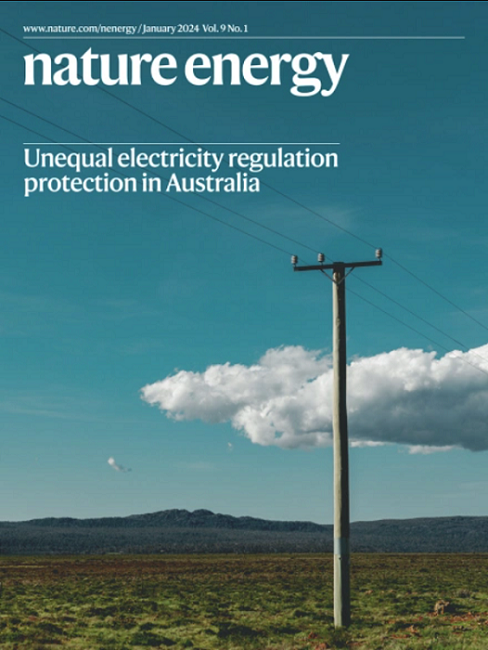Long-cycling lithium-metal batteries via an integrated solid–electrolyte interphase promoted by a progressive dual-passivation coating
IF 60.1
1区 材料科学
Q1 ENERGY & FUELS
引用次数: 0
Abstract
Stabilizing lithium (Li) metal anodes has long been hindered by the challenge of forming a stable solid–electrolyte interphase, stemming from the inherently high reactivity of Li metal with liquid electrolytes. Here we developed a progressive dual-passivation polymer coating strategy to stabilize Li-metal anodes, achieving exceptional cycle life of Li-metal batteries in carbonate electrolyte. Unlike current approaches, the synthesized copolymer coating passivates the Li-metal anode while also tailoring the Li-ion solvation structure by facilitating selective anion decoordination in a binary salt carbonate electrolyte. This process leads to the formation of an integrated solid–electrolyte interphase, featuring a chemical passivation outer layer predominant in LiF generated by the polymer coating and an anion-derived Li2O-prevalent inner layer from the electrolyte decomposition. Consequently, this coating strategy remarkably enhances the stability of Li-metal anodes, enabling double-layer Li||NMC811 pouch cells to maintain 80% of their initial capacity up to 611 cycles under a low electrolyte/capacity (E/C) ratio of 2.0 g Ah−1. Stabilizing lithium-metal anodes is challenging due to their high reactivity with electrolytes. This work presents a dual-passivation polymer coating that enhances solid–electrolyte interphase stability, improving cycling performance and increasing capacity retention over extended cycles.


通过渐进式双钝化涂层促进的集成固体电解质界面的长循环锂金属电池
长期以来,稳定锂金属阳极一直受到形成稳定的固体-电解质界面的挑战的阻碍,这源于锂金属与液体电解质固有的高反应性。在这里,我们开发了一种渐进的双钝化聚合物涂层策略来稳定锂金属阳极,实现锂金属电池在碳酸盐电解质中的特殊循环寿命。与目前的方法不同,合成的共聚物涂层在钝化锂金属阳极的同时,还通过促进二元碳酸盐电解质中阴离子的选择性配位来调整锂离子的溶剂化结构。这一过程导致形成了一个完整的固体-电解质界面,其特征是化学钝化外层主要是由聚合物涂层产生的LiF,而阴离子衍生的li2o主要是由电解质分解产生的内层。因此,这种涂层策略显著提高了锂金属阳极的稳定性,使双层Li||NMC811袋状电池在低电解质/容量(E/C)比为2.0 g Ah−1的情况下,在611次循环中保持80%的初始容量。
本文章由计算机程序翻译,如有差异,请以英文原文为准。
求助全文
约1分钟内获得全文
求助全文
来源期刊

Nature Energy
Energy-Energy Engineering and Power Technology
CiteScore
75.10
自引率
1.10%
发文量
193
期刊介绍:
Nature Energy is a monthly, online-only journal committed to showcasing the most impactful research on energy, covering everything from its generation and distribution to the societal implications of energy technologies and policies.
With a focus on exploring all facets of the ongoing energy discourse, Nature Energy delves into topics such as energy generation, storage, distribution, management, and the societal impacts of energy technologies and policies. Emphasizing studies that push the boundaries of knowledge and contribute to the development of next-generation solutions, the journal serves as a platform for the exchange of ideas among stakeholders at the forefront of the energy sector.
Maintaining the hallmark standards of the Nature brand, Nature Energy boasts a dedicated team of professional editors, a rigorous peer-review process, meticulous copy-editing and production, rapid publication times, and editorial independence.
In addition to original research articles, Nature Energy also publishes a range of content types, including Comments, Perspectives, Reviews, News & Views, Features, and Correspondence, covering a diverse array of disciplines relevant to the field of energy.
 求助内容:
求助内容: 应助结果提醒方式:
应助结果提醒方式:


